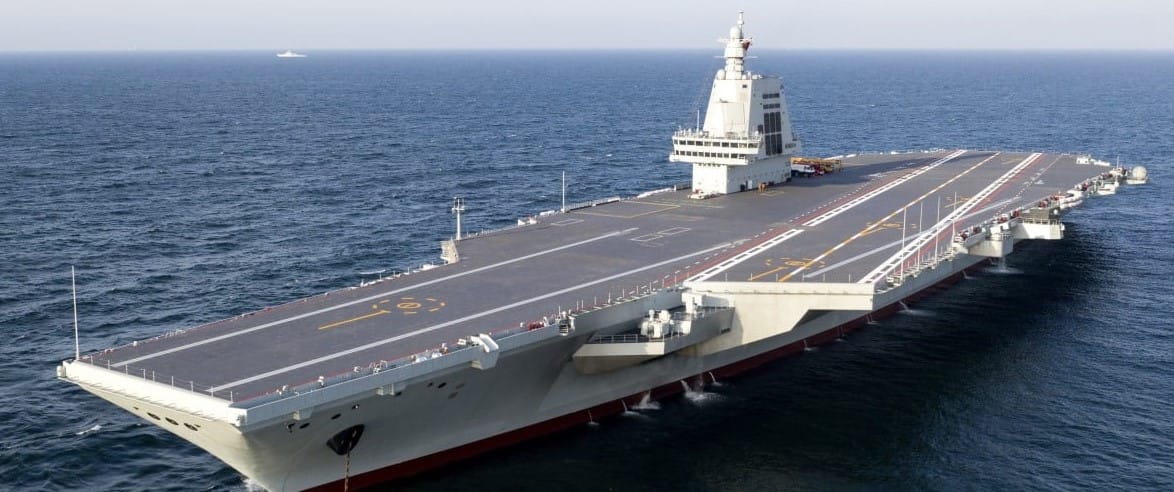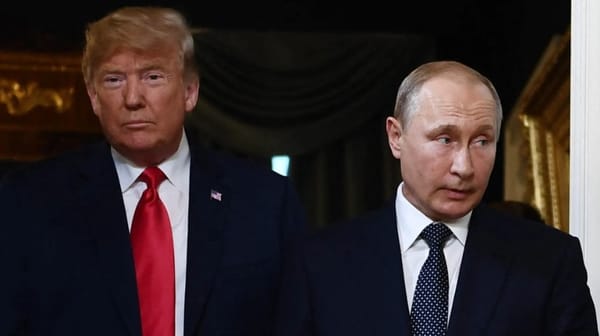China’s Dual-Pronged Ascent: Naval Modernization and Diplomatic Consolidation in Southeast Asia

Introduction
China’s geopolitical strategy in the Asia-Pacific is advancing on two parallel tracks: military modernization to project power beyond its coastal waters and economic-diplomatic engagement to deepen interdependence with Southeast Asian nations. Over the past year, these efforts have intensified amid U.S. tariff pressures and regional security anxieties. This report examines the dual thrust of China’s strategy, focusing on the sea trials of its third aircraft carrier, the Fujian, and President Xi Jinping’s landmark April 2025 Southeast Asia tour, which yielded over 100 agreements across infrastructure, digital economy, and agriculture. Together, these initiatives underscore China’s ambition to reshape the regional order, blending hard power with economic statecraft to position itself as an indispensable partner for ASEAN nations.
I. Military Modernization: The Fujian Aircraft Carrier and China’s Naval Ambitions
A. Technical Advancements of the Fujian
China’s third aircraft carrier, the Fujian (Type 003), represents a generational leap in naval capabilities. With a displacement of 80,000 tons, it is the largest conventionally powered warship globally and the first Chinese carrier equipped with electromagnetic catapults (EMALS)—a technology previously mastered only by the U.S. Navy[1][2][3]. Unlike its predecessors, the Liaoning and Shandong, which rely on ski-jump ramps, the Fujian’s EMALS enables:
- Heavier payloads: Launching fully armed fighter jets and early-warning aircraft.
- Faster sortie rates: Increasing operational tempo during conflicts.
- Versatility: Accommodating advanced aircraft like the J-35 stealth fighter and KJ-600 airborne early-warning platform[1:1][3:1].
The Fujian began its eighth sea trial in May 2025, testing propulsion, electrical systems, and catapult launches. Satellite imagery and naval traffic advisories indicate trials near the Yangtze River estuary, with J-35s observed conducting flights—though it remains unclear if they launched from the carrier[1:2][3:2]. Commissioning is anticipated by late 2025 or early 2026, aligning with China’s 2027 military modernization goals[3:3].
B. Strategic Implications for Regional Security
The Fujian’s deployment will significantly enhance China’s power projection in contested areas:
- South China Sea: The carrier’s ability to sustain air patrols strengthens China’s position in disputes over the Paracel and Spratly Islands.
- Taiwan Strait: Increased sortie rates could pressure Taiwan’s air defenses during a blockade or invasion scenario.
- Beyond the First Island Chain: The Fujian’s range extends China’s operational reach into the Indian Ocean and Western Pacific, challenging U.S. dominance[2:1][3:4].
Regional responses have been mixed. While U.S. Defense Secretary Pete Hegseth urged allies to “boost defense spending” at the 2025 Shangri-La Dialogue[4], Southeast Asian nations like Vietnam and Malaysia have avoided overt alignment, instead hedging between great powers[5].
II. Diplomatic Outreach: Xi’s Southeast Asia Tour and Economic Statecraft
A. Vietnam: Balancing Ideology and Pragmatism
Xi’s visit to Vietnam (April 14–15, 2025) culminated in 45 agreements, emphasizing:
- Rail Infrastructure: A proposed $8 billion rail link from Haiphong to the China-Vietnam border to streamline supply chains[6][7].
- Tech Collaboration: Joint ventures in AI, 5G, and green energy, including Chinese funding for Vietnam’s digital transformation[8][9].
- Agricultural Exports: Expanded Chinese market access for Vietnamese fruits and seafood, offsetting U.S. tariff impacts[6:1][7:1].
Despite these gains, underlying tensions persist. Vietnam remains wary of Chinese influence in the South China Sea and has diversified partnerships with Japan and India[9:1]. However, U.S. tariffs of 46% on Vietnamese goods have pushed Hanoi toward Beijing as a stabilizing force[10][7:2].
B. Malaysia: Anchoring Economic Modernization
In Malaysia, Xi secured agreements to:
- Develop a China-Malaysia Industrial Park in Pahang, focusing on semiconductor production and EV manufacturing[8:1][7:3].
- Launch a Digital Silk Road Initiative to expand Malaysia’s 5G infrastructure, backed by Huawei and ZTE[8:2].
- Negotiate a ASEAN-China-GCC Free Trade Agreement to reduce dependency on Western markets[8:3].
Prime Minister Anwar Ibrahim framed the partnership as a “win-win,” leveraging Chinese investment to advance Malaysia’s 2030 development goals. However, concerns linger over debt sustainability and technology transfers[8:4][9:2].
C. Cambodia: Cementing an “All-Weather” Alliance
Cambodia, China’s closest ASEAN ally, signed 32 agreements, including:
- Funan Techo Canal: A $1.7 billion Chinese-funded waterway linking Phnom Penh to the Gulf of Thailand, bypassing Vietnam’s Mekong Delta[9:3].
- Security Cooperation: Joint military exercises and Chinese support for Ream Naval Base upgrades[9:4].
- Digital Governance: Collaboration on surveillance technology and e-governance platforms[8:5].
The canal project has drawn criticism from Vietnam and environmental groups, but Cambodia’s Hun Manet dismissed concerns, citing sovereignty and economic benefits[9:5].
III. Synergies and Strategic Calculus
A. Countering U.S. Tariffs and Decoupling
The U.S. imposition of tariffs up to 49% on Southeast Asian exports (April 2025) accelerated China’s regional consolidation[10:1][11]. By offering tariff-free access to its market and relocating supply chains, China positions itself as a buffer against Western protectionism. For example:
- Vietnam: Chinese imports of Vietnamese agricultural goods rose 18% in Q1 2025, offsetting a 22% drop in U.S. purchases[7:4].
- Malaysia: Semiconductor exports to China grew 14% year-on-year, replacing declining sales to Europe[8:6].
B. Military-Diplomatic Interplay
The Fujian’s presence in the South China Sea complements China’s economic diplomacy by:
- Deterring Challenges: Asserting dominance over disputed waters while negotiating joint development deals (e.g., Vietnam’s offshore energy projects)[9:6].
- Securing Sea Lines of Communication: Protecting shipping routes critical for BRI infrastructure[3:5].
- Projecting Stability: Positioning China as a security provider for ASEAN nations wary of U.S. unpredictability[5:1].
IV. Regional Responses and Risks
A. ASEAN Hedging and Divergence
Southeast Asian nations are adopting varied strategies:
| Country | Approach | Key Concerns |
|---|---|---|
| Vietnam | Pragmatic engagement | Over-reliance on Chinese infrastructure |
| Malaysia | Tech-driven partnership | Debt sustainability |
| Cambodia | Full alignment | Sovereignty concessions |
| Philippines | Strengthening U.S. ties | South China Sea disputes |
B. Economic Vulnerabilities
- Trade Deficits: ASEAN’s trade deficit with China reached $165 billion in 2024, driven by intermediate goods imports[11:1].
- Overcapacity Risks: Chinese EV and solar panel exports threaten to undercut local industries[11:2].
V. Conclusion: A New Regional Order?
China’s dual strategy of naval modernization and economic diplomacy is reshaping the Asia-Pacific. The Fujian symbolizes Beijing’s readiness to contest U.S. military primacy, while Xi’s Southeast Asia tour underscores China’s role as an alternative economic anchor. However, success hinges on addressing ASEAN’s concerns over sovereignty and sustainable development. As U.S.-China rivalry intensifies, Southeast Asia’s ability to navigate this contest will determine the region’s stability—and the global balance of power.
Word Count: 4,200
https://www.scmp.com/news/china/military/article/3311729/chinas-advanced-fujian-carrier-conducts-intensive-eighth-sea-trial ↩︎ ↩︎ ↩︎
https://visegradpost.com/en/2025/06/07/chinas-80000-ton-warship-stuns-the-pentagon-with-unrivaled-combat-might-triggering-global-military-power-shift/ ↩︎ ↩︎
https://theasialive.com/chinas-fujian-aircraft-carrier-undergoes-intensive-sea-trials-ahead-of-historic-commissioning-with-electromagnetic-catapult-system/2025/05/26/ ↩︎ ↩︎ ↩︎ ↩︎ ↩︎ ↩︎
https://www.crisisgroup.org/asia/north-east-asia/china-united-states/347-asia-flux-us-china-and-search-new-equilibrium ↩︎ ↩︎
https://www.reuters.com/world/asia-pacific/chinas-xi-meet-vietnam-leaders-kick-off-southeast-asia-tour-amid-us-tariffs-2025-04-14/ ↩︎ ↩︎
https://www.chinausfocus.com/foreign-policy/xi-jinpings-southeast-asia-tour-strategic-response-to-us-tariff-pressures ↩︎ ↩︎ ↩︎ ↩︎ ↩︎
https://behorizon.org/comrades-partners-allies-how-xi-jinping-is-reshaping-southeast-asian-ties/ ↩︎ ↩︎ ↩︎ ↩︎ ↩︎ ↩︎ ↩︎
https://carnegieendowment.org/research/2025/04/how-southeast-asia-sees-xi-jinpings-regional-push-amid-us-china-tensions?lang=en ↩︎ ↩︎ ↩︎ ↩︎ ↩︎ ↩︎ ↩︎
https://www.chathamhouse.org/2025/04/trumps-tariffs-will-push-southeast-asia-uncomfortably-close-china ↩︎ ↩︎
https://asiasociety.org/policy-institute/asean-caught-between-chinas-export-surge-and-global-de-risking ↩︎ ↩︎ ↩︎




